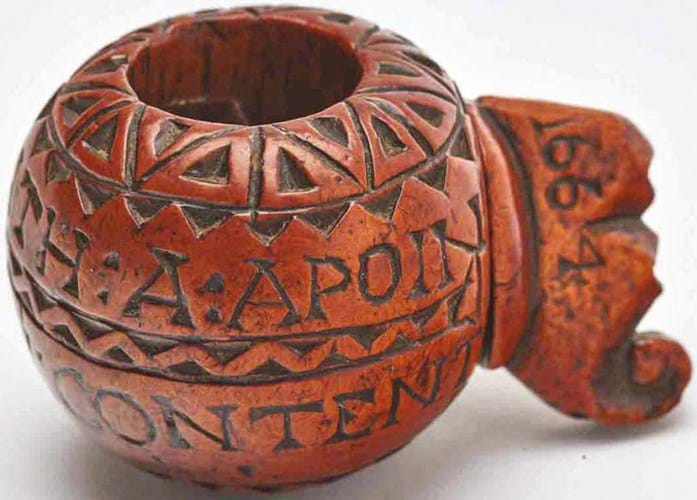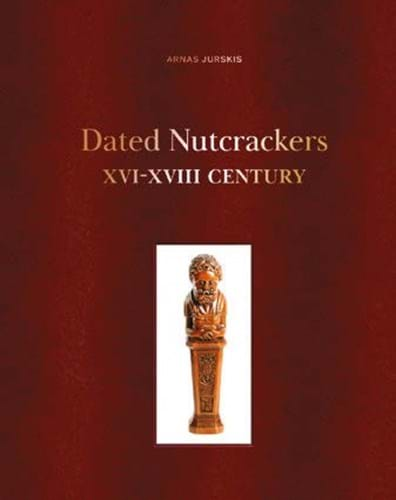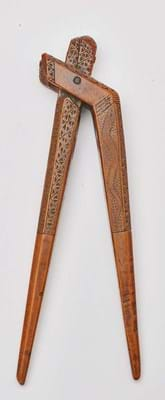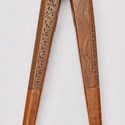Lithuanian businessman Arnas Jurskis, 52, founded a nut and dried fruit company trading in the Baltic and Nordic countries in 1995, and has been collecting nutcrackers for more than 20 years.
A prominent buyer at auctions in recent years, he has acquired more than 10,000 examples and in 2021 entered the Guinness Book of World Records for having the largest collection of nutcrackers. He plans to open a museum for his collection in Vilnius.
ATG: How and when did you get the collecting bug? Did you collect anything before nutcrackers?
Arnas Jurskis: My father had a decent postage stamp collection and, from my early childhood, I had a chance to see him patiently enjoying it. When I was 5 or 6, I started collecting empty cans, beer pads, bottle cups – everything that was free since I obviously had no money at that time. However, I was very curious as a child. Growing up my curiosity never disappeared and then nutcrackers appeared.
Tell us how and why you were drawn to nutcrackers
I am the founder of Arimex, the nut and dried fruit trading company, and I am (quite literally) nuts about nuts.

Figurative form lever action nutcracker with primitive carved facial details dated 1621. The shape of the handle can serve as a stopper for tamping down tobacco in a pipe.
When and where did you make your first nutcracker purchase?
I bought my first nutcracker in London, at an auction 20 years ago. At first, I bought it just out of curiosity. Later, when I started learning about its history it caught my interest. It turned out that the nutcracker resembles London Bridge. Apparently, in 1832 when London Bridge was demolished, local craftsmen had divided parts of its 850-year-old foundations among themselves. One of those craftsmen was Mr Ovenston who carved the nutcracker I bought. He used the oak and iron parts of the demolished bridge.
How long did it take from this first one to buy others and start a collection?
I was left so fascinated by the story of my first nutcracker that I began to look for others and the stories they can tell me. The collection I have today is a result of 20 years of work.

Dated 1664, this screw action nutcracker is inscribed with a motto of AS: GOD: HATH: A: APOINTED: SO: I: AM: CONTENTED.
How many do you have in your collection currently?
Today, the collection consists of more than 10,000 nutcrackers from 47 different countries around the world. The Guinness World Records confirmed it was the biggest nutcrackers collection in the world on July 23, 2021.
Do you collect anything else?
Currently, the only other collection that I have is of paintings by famous Lithuanian painter Adomas Galdikas. Galdikas is one of the most famous and innovative Lithuanian artists of the first half of the 20th century. However, for a long time, this artist was pushed aside by art critics. During the interwar period, few people understood Galdikas’ painting in Lithuania, and only European art critics highly appreciated it (Galdikas exhibited his canvases in New York next to Matisse and Chagall). During the Soviet era the artist’s work was ignored.
Therefore, I am glad to have managed to collect Galdikas’ most famous works, of which there are about 300 in the collection today. Last year we opened the Adomas Galdikas museum in the old town of Vilnius, in order to make the works available to the public.
Where do you find items to buy?
My mother Ramune and I started to seek out nutcrackers at fairs and markets, and later at online auctions and through other collectors.
The information we gained at auctions and through discussions with antique dealers and other collectors, visits to museums and exhibitions were of fundamental importance.
Would you classify your habit as ‘buying the best there is/the best you can’ or are you driven more by the ‘thrill’ of hunting something out that others have missed?
As time passed, we began to collect rare pieces, and gradually the collection started to take on a more specific, systematic character, focusing on rare and more refined items.
The collection’s oldest metal and wooden nutcrackers are from the 15th century. We also have some of the world’s oldest dated nutcrackers, the oldest of which – a wooden sculpted nutcracker – dates back to 1572.
The oldest wooden nutcrackers have been subjected to special radiocarbon studies to determine their age.
It does give a collector some pride to secure such a brilliant one-of-a-kind object, which is not only beautiful to look at but also historically significant. It is an example of the way of life in the 16th century, it gives a glimpse into historical context but also the human psyche, and what people liked and aspired to in the past.
What’s the most you ever spent on an item for your collection (roughly)?
Luckily nutcrackers are not expensive. The prices of the rarest pieces go to £10,000-20,000 maximum, and I constantly remind myself how lucky I am to have the possibility to buy the best pieces in the world. This would not be possible if I were collecting vases or coins, for example.
Do you sell items from your collection?
No.
Is there one item you are still looking for?
I am fascinated by old 16th-18th century dated nutcrackers. It reveals so much history and they are usually very well made as they were used for presents.
What advice would you give a young collector?
Specialise as early as possible, don’t try to buy everything.
When did you decide to open a museum?
In the collection I have nutcrackers made of different materials, including silver, brass, iron, steel, wood, porcelain, and even bone. There are various different cracking mechanisms: levers, screws, percussion, and pliers. This collection has a wide range of very different nutcrackers, from sturdy and utilitarian to delicate and decorative.
I want to show visitors how a nutcracker could be a surprising item in many ways – its functionality, versatility and in many cases, beauty.
This object can feed you literally, by helping you obtain the nutritious nut, hidden in a hard shell, and metaphorically, as an art object which gives you aesthetic pleasure and joy.

Arnas Jurskis’ book Dated Nutcrackers of the XVI-XVIII centuries.
Arnas Jurskis’ book Dated Nutcrackers of the XVI-XVIII centuries is available to buy via https://nutcrackers.lt/product/book-shop/
He plans another on nutcrackers from Switzerland later this year.
Jurskis asks anyone who wishes to sell any rare nutcrackers to please contact laura@numu.lt



















